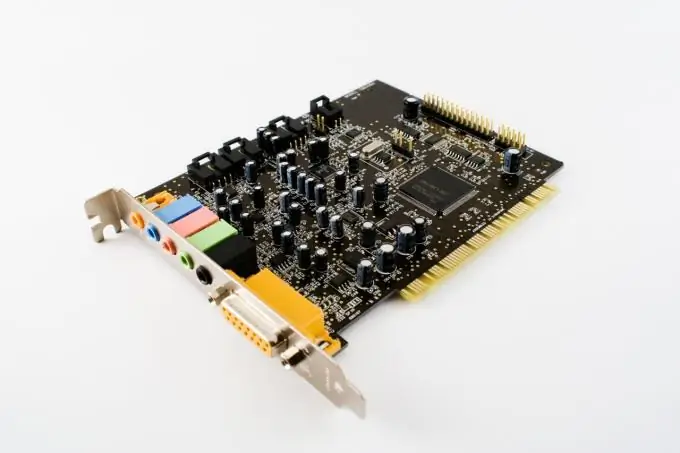To teach a computer to "speak and" sing, you need to connect a sound card. Depending on the configuration, the sound card can be built into the motherboard and disabled on purpose, or it can be absent as such. In each of these cases, you will have to connect the sound card in different ways.

Instructions
Step 1
To connect the sound card built into the motherboard, turn on the computer and at the very beginning of the boot, enter the BIOS by pressing the “Del” key. Moving through the BIOS using the keyboard arrows, we are looking for the menu responsible for configuring the integrated components. Most often it is located on the “Advanced” tab and is called “Integrated Peripherals”. However, the specific names of the tabs and menus may be different, in this case we are looking for wordings that are close in meaning.
Step 2
Once in the desired menu, we will see a list of all devices installed on the motherboard. These are various ports (Serial and USB), floppy controllers and other components. Among them we are interested in the item "Onboard Audio Controller", which is responsible for connecting a sound card. Having moved to the settings of this parameter, we change its value from “Disabled” (disabled) to “Enabled” (enabled).
Step 3
If your computer does not have a built-in sound card, you will need to install it directly into the system unit. To do this, turn off the power completely and, by unscrewing the screws, remove the side case cover.
Step 4
Having chosen a free slot on the motherboard for the sound card, remove the corresponding external plug from the back of the case.
Step 5
Gently holding the sound card on both sides, with light pressure, insert it into the selected slot. We check its fixation and correct installation.
Step 6
We close the case cover and connect the corresponding plugs from the speakers and microphone to the sound card.
Step 7
After starting the operating system, install the necessary drivers to recognize the sound card and its correct operation.






